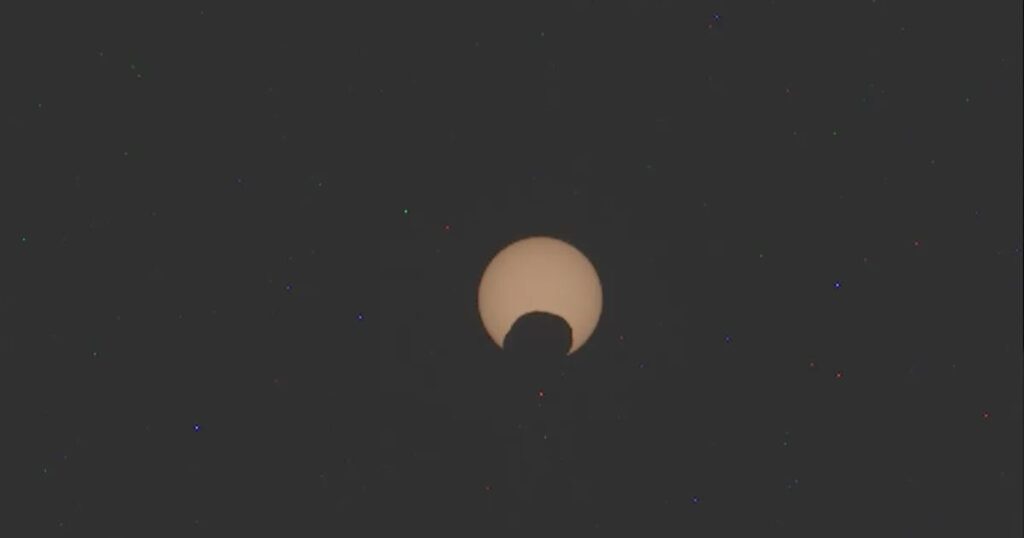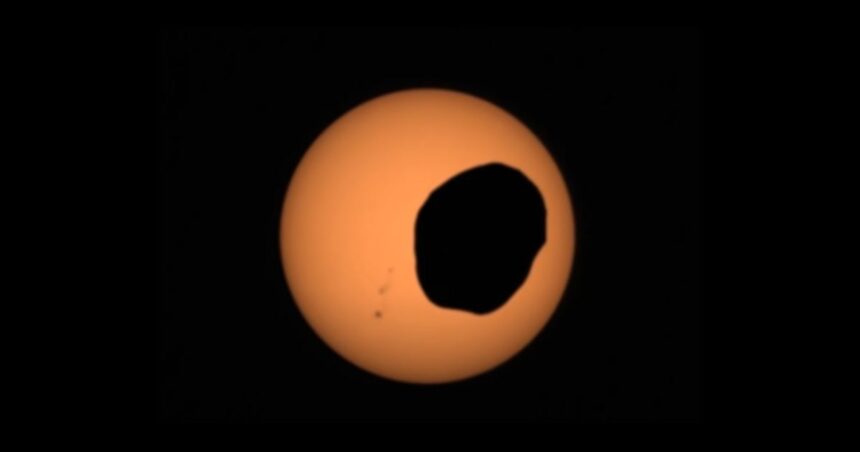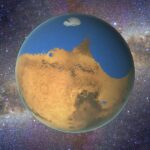Just as we can see solar eclipses from Earth, solar eclipses can also be seen from Mars. While our Earth has only one moon, Mars has a total of two moons. But the recent Mars Solar eclipse is due to the moon Phobos partially blocking the Sun’s disk.
What is a Solar Eclipse?
A solar eclipse occurs when the Moon passes between the Sun and Earth; it casts a shadow on Earth, leading to the partial blocking of the Sun.
Mars Solar Eclipse
On September 30, 2024, NASA’s Perseverance rover captured this rare event on Mars. Rover has a special camera, the Mastcam-Z camera, which can zoom. So Perseverance pointed these cameras toward the sky and clicked the photographs of a Solar eclipse on Mars.
We see the solar eclipse very beautifully from our Earth, but we see a very different kind of Mars solar eclipse. Our moon is round. Similarly, the moons of Mars are not spherical but have different shapes. Earth’s Solar eclipse is attractive like a ring of fire. Mars has two moons: one is Phobos, and the other is Deimos.
Phobos is shaped like a potato, causing the eclipse to look really cool and different from what we see on Earth. Our Moon covers the entire surface of the Sun, but in the case of Mars, Phobos size is only 20-25 Km. It is 157 times smaller than our Earth’s Moon. It covers only a tiny portion of the Sun. This phenomenon is known as transit.

The small size of the Moon, and it orbits Mars very closely, just 6,000 Kilometers away. Compared to our Moon, it orbits the Earth from 384,400 km. Due to these reasons it moves very fast and orbits Mars three times a day. If anyone observes this solar eclipse, he never experiences a longer solar eclipse. He would experience only thirty seconds of Mars solar eclipse.
This isn’t the first time we’ve seen a Solar eclipse on Mars. We saw the first Solar eclipse on Mars 20 years ago. Spirit and Opportunity captured it. They took images of the solar eclipse. First Mars solar eclipse video recorded by Curiosity rover.
Mars never has a total solar eclipse. All Solar eclipses on Mars are Annular solar eclipses. Moon Phobos is not quite enough to cover the entire surface of the Sun to create a Total solar eclipse.
People all over the world are excited about this news. It shows how much we can learn from exploring other planets. The Perseverance rover is doing an amazing job, and scientists are hopeful that it will help us understand Mars better
As Phobos, the moon of Mars, goes around the planet, its gravity pulls on Mars a little bit. This pull changes the shape of the rocks inside Mars just a tiny bit. These tiny changes also make phobos path around Mars change over time. By studying these changes, scientists can learn how soft or hard the inside of Mars is. This helps them understand what Mars is made of inside.
Editor’s Recommendations
- Euclid Space Telescope Reveals the 1% of Universe Map From Great Cosmic Atlas
- New Study Claims Dark Matter Doesn’t Exist and Universe is 27 Billion Years Old!!
- Now SpaceX’s Super Heavy Starship Can Ready for Re-launch Within an Hour After Liftoff!
- NASA’s Europa Clipper Begins Its Epic Voyage to Jupiter and its Icy Moon Europa




